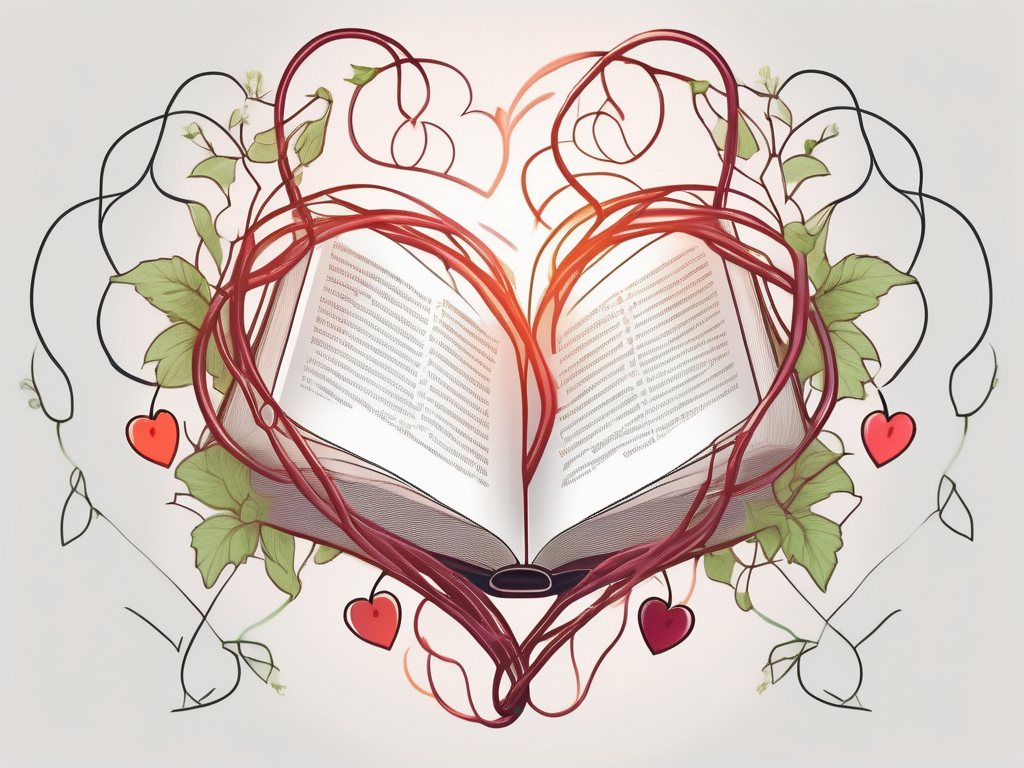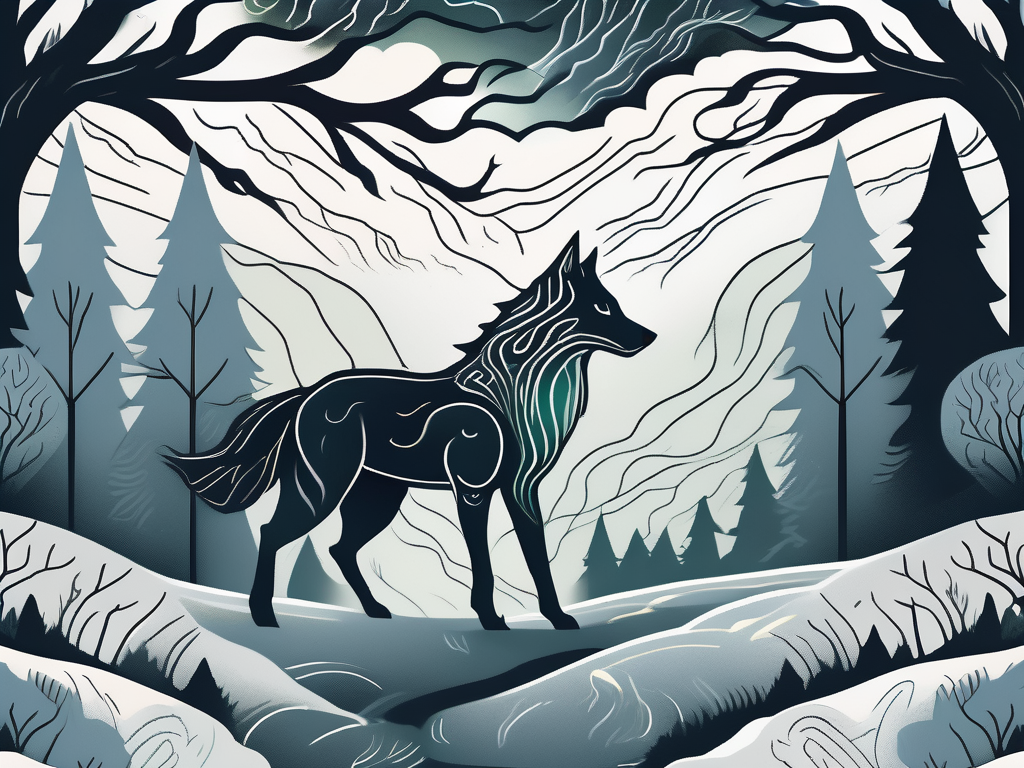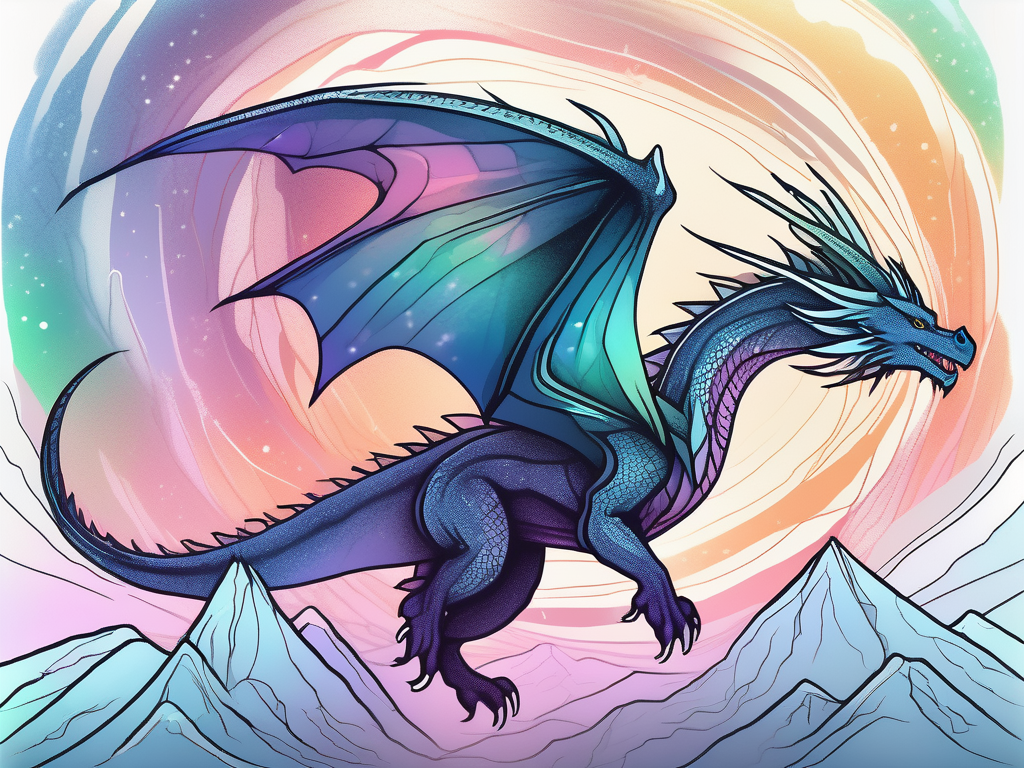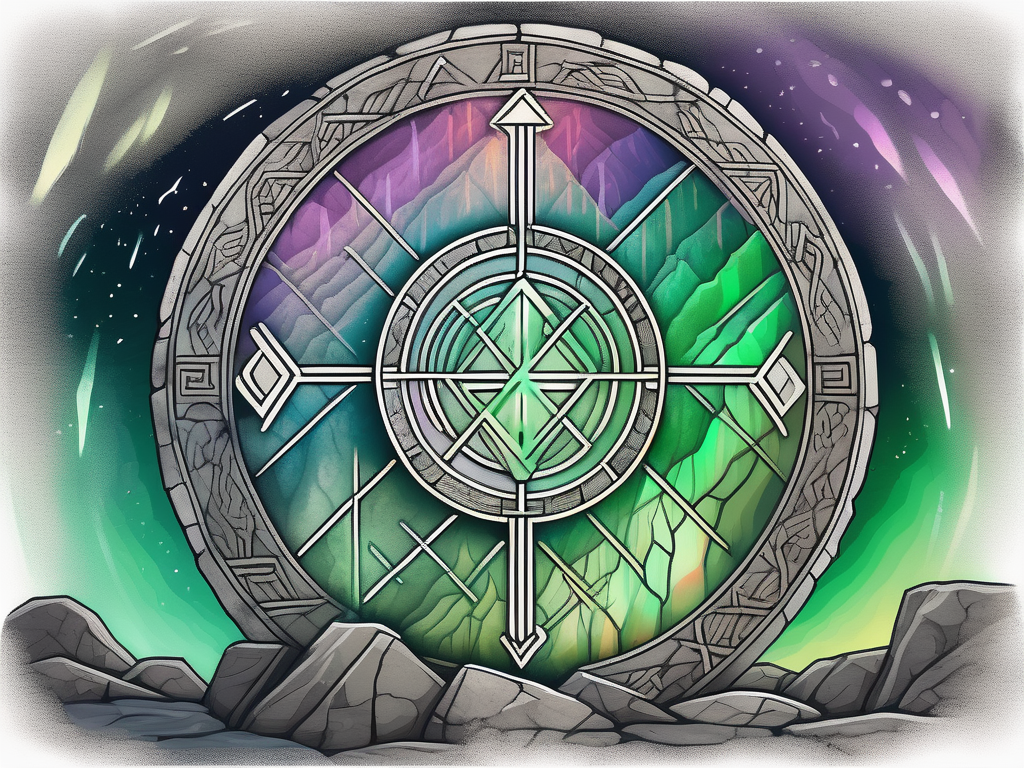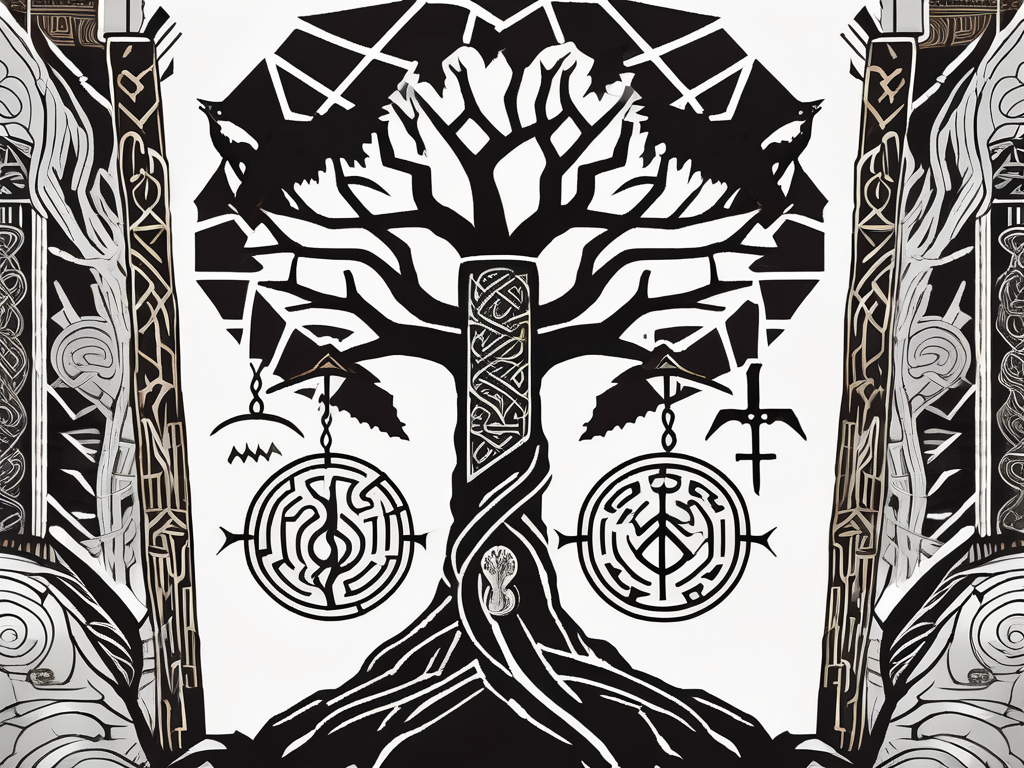Norse mythology, with its rich tapestry of gods, creatures, and epic tales, has captivated the imaginations of people for centuries. In this article, we delve deep into the enchanting world of Norse mythology to understand its origins, key figures, concepts of fate, rituals, and profound influence on modern culture. So grab your favorite horn of mead and join us on this journey through the realms of the Norse gods.
Understanding the Origins of Norse Mythology
Before we can fully appreciate Norse mythology, we must first understand its origins. Dating back to the Viking Age, Norse mythology was the religious belief system of the Norse people, who inhabited what is now known as Scandinavia. Passed down orally through generations, these captivating stories were eventually recorded in written form during the medieval period.
The origins of Norse mythology can be traced back to the prehistoric times when the ancient Norse tribes roamed the vast landscapes of Scandinavia. These tribes, deeply connected to nature and the elements, sought to explain the mysteries of the world around them. Through their observations and experiences, they developed a rich and complex mythology that would shape their culture and beliefs for centuries to come.
The Creation Myth and the Nine Worlds
At the core of Norse mythology lies a creation myth that gives birth to nine worlds, each with its own distinct characteristics. From the majestic realm of Asgard, home of the gods, to the fiery depths of Muspelheim and the frozen tundra of Niflheim, each world is intricately linked, shaping the entire Norse cosmos.
The creation myth begins with the primordial void known as Ginnungagap, a vast emptiness where fire and ice collided. From this collision, the first being, Ymir, emerged. Ymir was a giant, and from his body, the world was formed. His flesh became the earth, his blood the seas, and his bones the mountains. The gods, Odin, Vili, and Ve, then shaped the world and created the first humans, Ask and Embla.
As the gods populated the world, they established their realms within the nine worlds. Asgard, the realm of the Aesir gods, stood at the center of the cosmos. It was a place of great splendor, with towering halls and majestic palaces. The Aesir gods, led by the mighty Odin, ruled over Asgard and were responsible for maintaining order and protecting the mortal realm.
Surrounding Asgard were the other eight worlds, each with its own unique landscapes and inhabitants. Midgard, the realm of humans, was located in the middle, between Asgard and the other worlds. It was a world of great diversity, where humans lived and thrived under the watchful eyes of the gods.
The other worlds included Vanaheim, home of the Vanir gods, who governed fertility and abundance; Jotunheim, the realm of the giants; Alfheim, the realm of the light elves; Svartalfheim, the realm of the dark elves; Nidavellir, the realm of the dwarves; Niflheim, a frozen realm of ice and mist; and Muspelheim, a fiery realm of flames and heat.
The Role of the Aesir and Vanir Gods
Central to Norse mythology are the Aesir and Vanir gods, who embody different aspects of nature and human existence. Led by the mighty Odin, ruler of Asgard, the Aesir gods handle war, wisdom, and other realms of human interest. The Vanir gods, on the other hand, govern fertility, prosperity, and agricultural abundance.
Odin, the Allfather, is the chief deity of the Aesir gods. He is associated with wisdom, poetry, and magic. Known for his insatiable thirst for knowledge, Odin sacrificed one of his eyes to gain wisdom and understanding of the world. He is often depicted as a wise old man with a long beard, wearing a wide-brimmed hat and carrying a spear named Gungnir.
Thor, the son of Odin and the god of thunder, is another prominent member of the Aesir gods. He is known for his strength and courage, wielding the mighty hammer Mjolnir, which can summon thunder and lightning. Thor is often depicted as a burly warrior with red hair and a beard, wearing a belt that enhances his strength.
The Vanir gods, including Freyja, Freyr, and Njord, are associated with fertility, prosperity, and the bounties of nature. Freyja, the goddess of love and beauty, is known for her enchanting beauty and her ability to bring fertility and abundance to the land. Freyr, her brother, is the god of peace and prosperity, and Njord is the god of the sea and seafaring.
Together, the Aesir and Vanir gods shape the Norse cosmos, influencing the lives of both gods and humans. Their stories and adventures are woven into the fabric of Norse mythology, providing insights into the complexities of the natural world and the human condition.
Key Figures in Norse Mythology
Now let’s meet some of the key figures in Norse mythology, whose tales continue to inspire and fascinate us to this day.
Odin: The Allfather
Odin, the wise and enigmatic Allfather, is the supreme deity in Norse mythology. Known for his insatiable thirst for knowledge, Odin sacrificed an eye to gain wisdom and tirelessly seeks knowledge from far and wide. As the ruler of Asgard and the conductor of the mighty Valkyries, Odin watches over both gods and humans alike.
Legend has it that Odin’s quest for knowledge led him to hang himself from the world tree, Yggdrasil, for nine days and nights, pierced by his own spear. It was during this self-imposed ordeal that he discovered the secrets of the runes, the ancient Norse alphabet that holds immense power. With his one remaining eye, Odin sees beyond the physical realm, perceiving the hidden truths of the universe.
As the ruler of Asgard, Odin presides over the grand hall of Valhalla, where fallen warriors are brought by the Valkyries to feast and prepare for the final battle of Ragnarok. With his wisdom and foresight, Odin guides the gods and humans through the tumultuous times, always seeking to maintain balance and order in the cosmos.
Thor: The Thunder God
Thor, famous for his mighty hammer Mjolnir and his thunderous exploits, is the god of thunder and protector of humankind. Known for his boisterous nature and incredible strength, Thor is a beloved figure whose adventures defending Asgard and humanity make for thrilling tales.
With his flowing red beard and bulging muscles, Thor is often depicted as a formidable warrior, wielding his hammer with unmatched prowess. Mjolnir, crafted by the dwarves, is not only a weapon but also a symbol of Thor’s power to summon thunder and lightning, a force that strikes fear into the hearts of his enemies.
Despite his brawn, Thor possesses a kind heart and a deep sense of justice. He is known to be fiercely protective of his family and friends, often embarking on daring quests to retrieve stolen treasures or rescue those in need. Thor’s adventures take him to the farthest reaches of the nine realms, battling giants, trolls, and other mythical creatures along the way.
Loki: The Trickster
A complex and mischievous character, Loki embodies both chaos and cunning intellect. The trickster god often finds himself playing a pivotal role in the Norse myths, sometimes causing chaos, and other times aiding the Aesir. While his motives may be shrouded in mystery, Loki’s influence can never be underestimated.
With his ever-changing appearance and silver tongue, Loki is a master of deception and manipulation. He is known for his ability to shape-shift into various forms, from a mischievous fox to a seductive maiden. Loki’s tricks and pranks often lead to unexpected consequences, testing the gods’ patience and challenging their sense of order.
Despite his unpredictable nature, Loki’s cunning is sometimes harnessed for the greater good. In one famous tale, he aids Thor in retrieving Mjolnir after it is stolen by the giant Thrym, disguising himself as the beautiful bride of Thrym. Loki’s quick thinking and clever schemes often provide the gods with unconventional solutions to their problems.
However, Loki’s actions are not without consequences. His mischief and betrayal eventually lead to dire consequences for both gods and mortals, setting in motion the events that will ultimately lead to Ragnarok, the cataclysmic battle that will bring about the end of the world.
The Concept of Fate and Destiny
In Norse mythology, the concept of fate and destiny plays a significant role, shaping the lives of gods and mortals alike.
The Norns: Weavers of Fate
The Norns, three powerful female beings, determine the destinies of all beings. They weave the intricate threads of fate, shaping the lives of gods and humans from their mysterious realm of Urd. Even the gods themselves are subject to the decree of the Norns, emphasizing the enduring power of fate.
Ragnarok: The Norse Apocalypse
Ragnarok, the prophesied Norse apocalypse, heralds the end of the world as we know it. In this cataclysmic event, gods, giants, and other mythical creatures clash in a colossal battle, leading to the destruction and subsequent rebirth of the Norse cosmos. Ragnarok serves as a reminder of the cyclical nature of existence and the inevitability of change.
Rituals and Practices in Norse Religion
Beyond the captivating tales, Norse mythology was a living religion that encompassed various rituals and practices.
Blót: The Sacrificial Ritual
One of the most prominent Norse rituals was Blót, a sacrificial offering to the gods. It involved feasting, singing, and symbolic sacrifices to forge a connection between the mortal realm and the divine. Blót reinforced social bonds and sought the gods’ favor, ensuring the fertility of the land and the well-being of the community.
Seiðr: Norse Magic and Divination
Within Norse mythology, Seiðr was a form of magic and divination practiced predominantly by women. Through trance-like states, practitioners sought wisdom, performed healing, and gained insight into the future. Seiðr was a sacred and mysterious ritual, demonstrating the profound connection between the mortal and spiritual realms.
The Influence of Norse Mythology on Modern Culture
The influence of Norse mythology extends far beyond the ancient tales. Its impact can be seen in contemporary literature, art, and popular media.
Norse Mythology in Literature and Art
From classic works like J.R.R. Tolkien’s “The Lord of the Rings” to Neil Gaiman’s “American Gods,” Norse mythology continues to inspire authors and artists alike. Its themes of heroism, sacrifice, and the eternal struggle between good and evil resonate with audiences of all ages, ensuring its timelessness.
Norse Mythology in Popular Media
The popularity of Norse mythology has seen a surge in recent years, with its gods and creatures gracing the silver screen and TV series. From Marvel’s Thor franchise to the fan-favorite television show “Vikings,” the allure of Norse mythology continues to captivate and enthrall audiences, solidifying its place in modern culture.
Closing Thoughts
In conclusion, Norse mythology is not merely a collection of ancient stories but a doorway into a complex and captivating religious belief system. Through its enchanting tales of gods, heroes, and the cosmic battle of Ragnarok, Norse mythology reminds us of the timeless qualities that shape the human experience. So, raise your horn and join the ranks of those who embrace the intricacies of Norse mythology, for its magic and wisdom reverberate through the ages.

